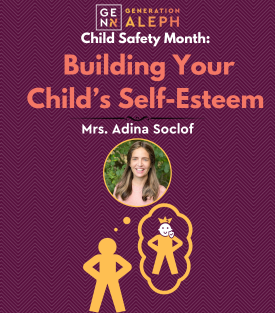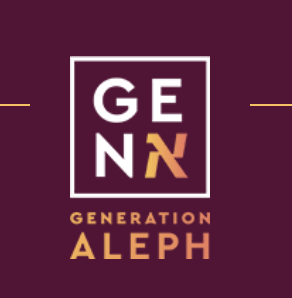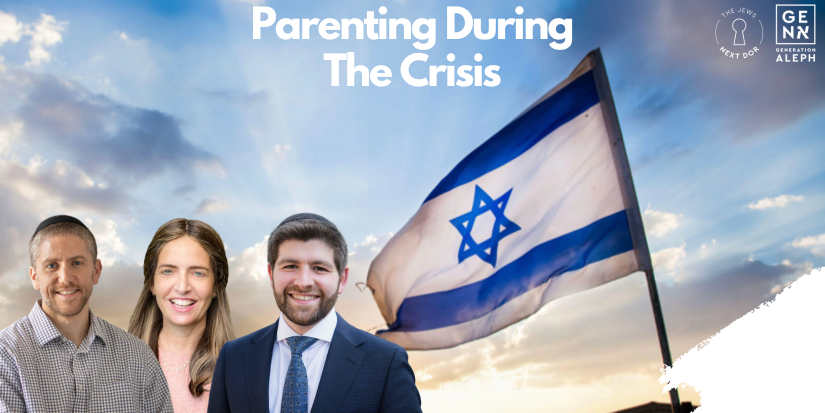בְּטַבְּעֹת֙ הָֽאָרֹ֔ן יִֽהְי֖וּ הַבַּדִּ֑ים לֹ֥א יָסֻ֖רוּ מִמֶּֽנּוּ:
The poles of the ark shall be in the rings; they shall not be removed from it. (Shemos 25:15)
Parshas Terumah begins with the Halachos of the Aron in the Mishkan. While the Aron was not the only vessel in the Beis HaMikdash to have poles (the Shulchan and the Mizbeach also had poles) it is unique in that there is a specific halacha that the poles were never to be removed. The permanence of the poles is striking in that the utility of the poles was for traveling purposes. The Leviim would hold onto the poles as they would carry the Aron from place to place. Think of the poles as the collapsible handle on your luggage that folds back into the luggage when stored away. Why would Hashem want the poles to remain permanently in place? Why not, as He allowed in other cases, remove the poles when the Aron was at rest?
The Sefer HaChinuch (Mitzvah 96) explains that in prohibiting us from removing the poles Hashem is ensuring that the design of the poles will be such that they are firmly fastened in place. If we are allowed to remove the poles we would naturally design them in such a way that they are easily removed and placed back on. In the event that we would need to move the Aron in a hurried fashion it would be possible to place the poles in without them being properly attached. The Aron, because of its precarious position, may Chas V’shalom fall. Bg instructing us to never remove the poles, Hashem ensures that the Aron will be safe and secure during travel.
The Aron housed the Luchos which as Rav Saadiah Gaon taught contained the entirety of the Torah. Thus the halachos of the Aron give us insight into the way Torah must be transmitted. The Torah has two positions so to speak: at rest and on the go. We may think of Torah “at rest” as our time in Yeshiva or seminary. Safely ensconced in a holy environment, surrounded by incredible role models and inspiring shiurim, our feet appear to be firmly rooted in the soil of a growth oriented Jew. Torah “on the go” is when we have left the hallowed halls of Yeshiva or seminary. In confronting the outside world with its myriad of challenges and alien values we may sometimes falter and Chas V’shalom stray from the path that we have set out for ourselves. How can we ensure that we remain righteous in an environment that often seems to be fundamentally opposed to our central belief system? Even when our Torah is in a “state of rest” we must be prepared to be “on the go.” The permanence of the poles teaches us that the Torah must go with us wherever we go. It is designed to travel to every destination that we will encounter. And it is imperative that even when we are in a state of rest we are prepared to be on the go. Yeshivas and sems are obligated not only to create a growth oriented environment but to prepare their students for what comes next. To have the difficult conversations about what a Torah life looks like when they are outside of the bubble. There are times when we are suddenly and without warning thrust from the environments we were raised in. If we wait until the very end to prepare our students for what comes next, there are those who will be woefully underprepared. If the poles of the Aron are firmly in place then the entire time a Talmid is in Yeshiva he is preparing for life after Yeshiva. Even if Chas V’shalom his time is suddenly cut short, he is ready to encounter the challenges that lie ahead.
As parents we must think of our homes as a Mishkan Mi’at, a small sanctuary. The environment in our home ought to be one of pristine Kedusha and the Torah must be kept in the Kodesh HaKedoshim. What are the books that line our shelves? What is the artwork on our walls? What type of music is playing in our home? All of these things go a long way to creating an environment where our children see that our core values are leading a God-centric life in which Judaism has primacy above all. We may not abdicate our Torah responsibilities to the Yeshivas and Bais Yaakov’s. We too must prepare our children to take our Torah on the go. Parents have a responsibility to share with their children the challenges they may face on a daily basis. What it is like to wear a Yarmulke in the workforce. How they confronted anti-semtism. Opportunities that they had to cut corners but instead chose to be honest in business and to be Mekadesh Shem Shomayim. In many ways parents may be more well suited for this task then their children’s Rabbeim. After all, for the most part, we the Rabbeim remain safely ensconced in the bubble in which we were raised. With some exceptions, most of us have little to no experience in confronting the challenges that the business world presents. Parents who confront these opportunities regularly are well positioned to have these conversations with their children. It is my experience that children naturally look ahead in life. They are incredibly curious as to how they will handle the obstacles that lie ahead. As parents we may naturally want to encourage them to be present in the moment and enjoy their time being young but we should also not squander the opportunity to have meaningful conversations about how we bring Hashem into every facet of our lives. After all, an infinite God ought to be present in every situation we find ourselves in. Giving our children ample time in Yeshiva to grow and mature as Bnei Aliyah is an exceptional gift that we give our children. Ensuring that the poles are securely attached even when they are safely hidden away in the Kodesh HaKedoshim is mission critical to our children’s long term success.
Submit your questions
"*" indicates required fields











